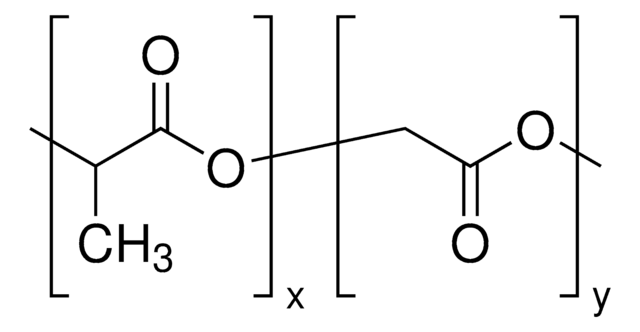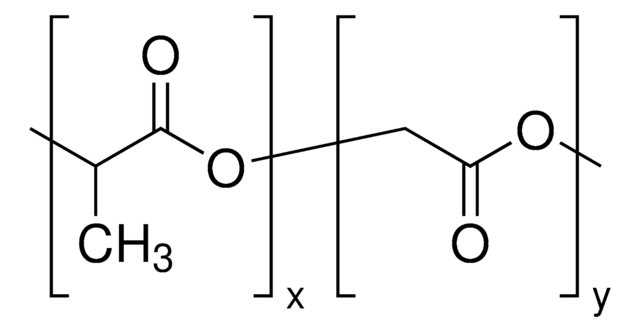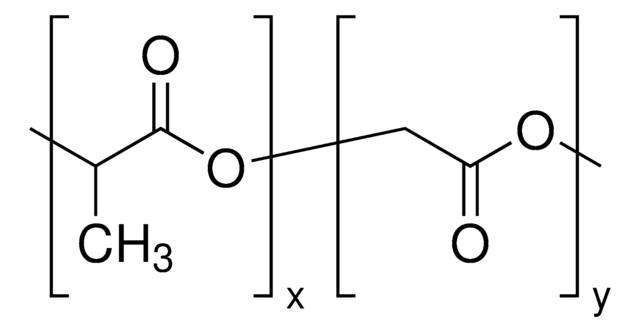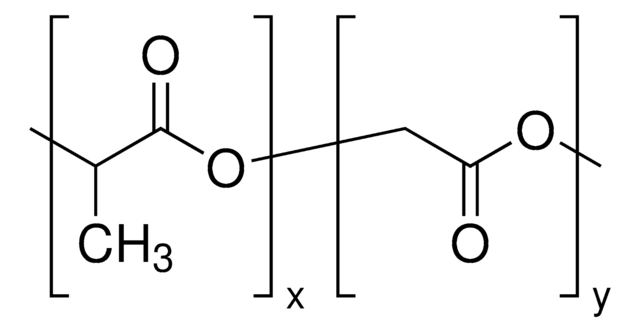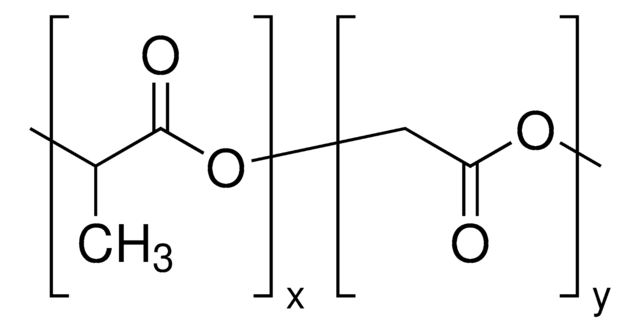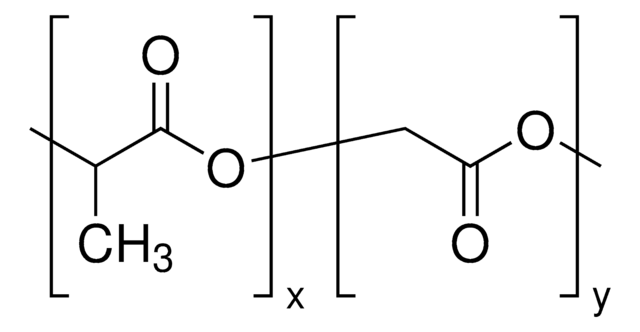I have been working on the preparation of PLGA nanoparticles as a part of my PhD PROJECT and this product has been consistent with the quality based on the stability of the prepared nanoparticles.
719870
Resomer® RG 503 H, Poly(D,L-lactide-co-glycolide)
acid terminated, lactide:glycolide 50:50, Mw 24,000-38,000
Sinónimos:
Poly(D,L-lactide-co-glycolide), PLGA
About This Item
Productos recomendados
Nivel de calidad
Formulario
amorphous
cociente alimentación
lactide:glycolide 50:50
mol peso
Mw 24,000-38,000
marco temporal de la degradación
<3 months
viscosidad
0.32-0.44 dL/g, 0.1 % (w/v) in chloroform(25 °C, Ubbelohde) (size 0c glass capillary viscometer)
temperatura de transición
Tg 44-48 °C
temp. de almacenamiento
2-8°C
cadena SMILES
OCC(O)=O.CC(O)C(O)=O
Clave InChI
XBBVURRQGJPTHH-UHFFFAOYSA-N
¿Está buscando productos similares? Visita Guía de comparación de productos
Aplicación
Características y beneficios
Forma física
Información legal
Producto relacionado
Código de clase de almacenamiento
11 - Combustible Solids
Clase de riesgo para el agua (WGK)
WGK 3
Punto de inflamabilidad (°F)
Not applicable
Punto de inflamabilidad (°C)
Not applicable
Elija entre una de las versiones más recientes:
¿Ya tiene este producto?
Encuentre la documentación para los productos que ha comprado recientemente en la Biblioteca de documentos.
Los clientes también vieron
Artículos
Interest in utilizing biodegradable polymers for biomedical applications has grown since the 1960s.
Synthetic aliphatic polyesters dominate resorbable biomaterials in clinical use.
Synthetic aliphatic polyesters dominate resorbable biomaterials in clinical use.
Synthetic aliphatic polyesters dominate resorbable biomaterials in clinical use.
Active Filters
Nuestro equipo de científicos tiene experiencia en todas las áreas de investigación: Ciencias de la vida, Ciencia de los materiales, Síntesis química, Cromatografía, Analítica y muchas otras.
Póngase en contacto con el Servicio técnico
